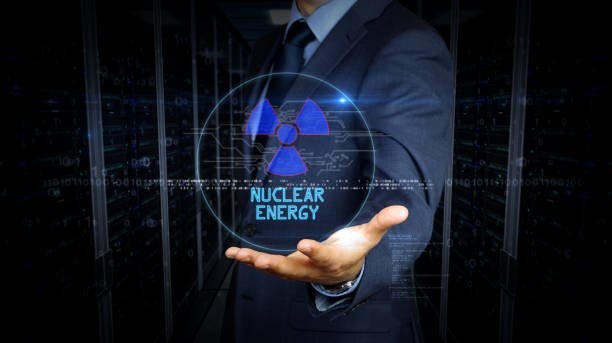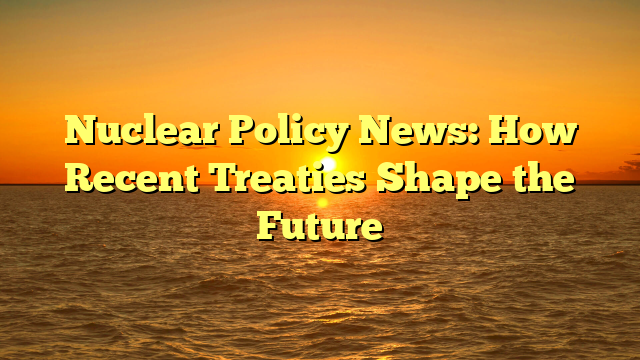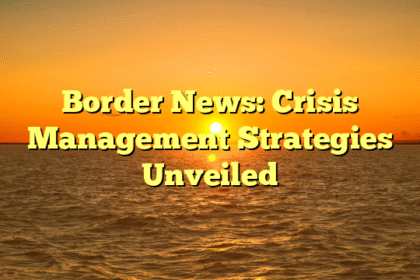Nuclear Policy News
In an period characterised by speedy technological developments and shifting geopolitical landscapes, nuclear coverage information takes heart stage in discussions about world safety. The event of treaties geared toward managing and limiting nuclear armaments is essential. Every treaty not solely displays the modern attitudes of nation-states in the direction of nuclear weapons but in addition paints an image of future diplomatic relations and safety frameworks. On this article, we navigate the most recent developments in nuclear coverage, diving into how latest treaties are shaping the long run world order.
Understanding Nuclear Coverage

Nuclear coverage encompasses the methods and agreements made by international locations relating to the use, improvement, and deployment of nuclear weapons. It’s a advanced subject influenced by numerous components, together with nationwide safety wants, worldwide relations, and public opinion. Because the world grapples with the threats posed by nuclear proliferation, retaining up to date with nuclear coverage information is important for understanding world stability.
The Panorama of Current Treaties
Over the previous few years, a number of important treaties and agreements have been established, renewed, or mentioned. These treaties purpose to both cut back the variety of nuclear weapons, restrict their improvement, or set up frameworks for cooperation. Right here’s a more in-depth have a look at some key treaties and their implications.
1. The Treaty on the Prohibition of Nuclear Weapons (TPNW)
Adopted in July 2017 and getting into into drive in January 2021, the TPNW marked a historic step in the direction of nuclear disarmament. The treaty is critical because it legally bans nuclear weapons and pushes state events to pursue disarmament. As of late 2023, over 60 international locations have ratified this treaty, signaling a powerful worldwide dedication to nuclear disarmament.
Implications: The TPNW pressures nuclear-armed states to rethink their arsenals and encourages non-nuclear states to advocate for disarmament. As public consciousness grows about nuclear risks, the TPNW obliges nuclear states to have interaction with their fellow nations in additional fruitful talks.
2. The New START Treaty
The New Strategic Arms Discount Treaty (New START), signed between the US and Russia in 2010, goals to scale back the variety of deployed strategic nuclear warheads. After being prolonged in 2021 for 5 further years, this treaty stays essential for limiting the world’s two largest nuclear arsenals.
Implications: The continuation of New START permits for a managed atmosphere relating to the nuclear capabilities of the U.S. and Russia. Common information exchanges and inspections promote transparency and mitigate dangers of misunderstandings that might result in armed battle.
3. The Complete Nuclear-Take a look at-Ban Treaty (CTBT)
Though the CTBT, adopted in 1996, has but to enter into drive because of key nations withholding ratification, its significance can’t be ignored. The treaty goals to ban all nuclear explosions and thereby enhances broader disarmament efforts.
Implications: The CTBT’s enforcement is intently tied to worldwide norms towards nuclear testing. The treaty’s steady push for non-proliferation helps curb nuclear capabilities, fostering a world local weather hostile to nuclear arms improvement.
Key International Gamers in Nuclear Coverage
United States
The U.S. stays a central participant in nuclear coverage discussions, being one of many largest holders of nuclear weapons. The present administration has emphasised diplomacy in addressing nuclear threats, significantly with international locations like North Korea and Iran.
Russia
As the opposite main nuclear energy, Russia’s choices considerably form the worldwide nuclear panorama. Its strategy has been characterised by assertiveness and a reluctance to have interaction in disarmament discussions, complicating worldwide relations.
China
China’s rising nuclear arsenal and its give attention to modernizing warheads have raised considerations amongst different nations. The nation’s nuclear technique is evolving, with a give attention to enhancing deterrents and fascinating in energy projection.
North Korea
North Korea’s improvement of nuclear weapons creates volatility within the Asia-Pacific area. The regime’s flouting of worldwide norms heightens tensions, resulting in pressing nuclear coverage information updates.
The Position of Multilateral Boards
United Nations
The UN performs a pivotal function in selling disarmament initiatives through platforms just like the Convention on Disarmament (CD). The group facilitates dialogues between member nations, fostering understanding and collaboration on nuclear coverage.
NATO
NATO’s nuclear technique incorporates deterrence whereas guaranteeing collective protection. The alliance emphasizes the significance of nuclear sharing amongst member states for mutual safety.
The Worldwide Atomic Vitality Company (IAEA)
As a key participant in monitoring compliance, the IAEA ensures that nuclear packages are used for peaceable functions. Its function in verifying nuclear actions is important for constructing belief amongst nations.
Current Challenges in Nuclear Coverage
Regardless of developments in treaty agreements, a number of challenges threaten the steadiness of nuclear coverage globally:
Renewed Arms Race
The resurgence of tensions amongst world powers has rekindled fears of a brand new arms race. With nations modernizing present arsenals and creating new weapons, the idea of mutual deterrence is more and more underneath menace.
Cybersecurity Dangers
With modernization comes vulnerability. The combination of digital applied sciences into nuclear command and management methods raises considerations about cybersecurity—an space that must be addressed promptly in nuclear coverage discussions.
Evolving Applied sciences
Rising applied sciences equivalent to synthetic intelligence and hypersonic weapons pose new challenges for nuclear coverage. These improvements might alter the panorama of how international locations understand deterrence and engagement.
Conclusion: Shaping a Safer Future
As we study the latest developments in nuclear coverage information, it’s evident that treaties play an important function in fostering worldwide stability. Whereas challenges abound, the frameworks set by agreements just like the TPNW and New START illuminate pathways towards a safer world atmosphere.
Actionable Insights for the Future
-
-
Keep Knowledgeable: Recurrently observe nuclear coverage information to know the shifts in world safety dynamics.
-
-
-
Advocate for Disarmament: Have interaction in discussions round nuclear disarmament. Public and political advocacy can affect nationwide insurance policies.
-
-
-
Assist Multilateral Efforts: Encourage your governments to partake in multilateral discussions and treaties that purpose to curb nuclear proliferation.
-
-
- Educate Others: Share info on nuclear insurance policies and treaties inside your group to lift consciousness concerning the significance of collective safety.
By staying knowledgeable and engaged, people can contribute to a world dialogue that prioritizes peace over nuclear proliferation. The way forward for nuclear coverage hinges on collaborative efforts, transparency, and a dedication to disarmament—addressing the urgent challenges of at the moment with proactive methods for tomorrow.







